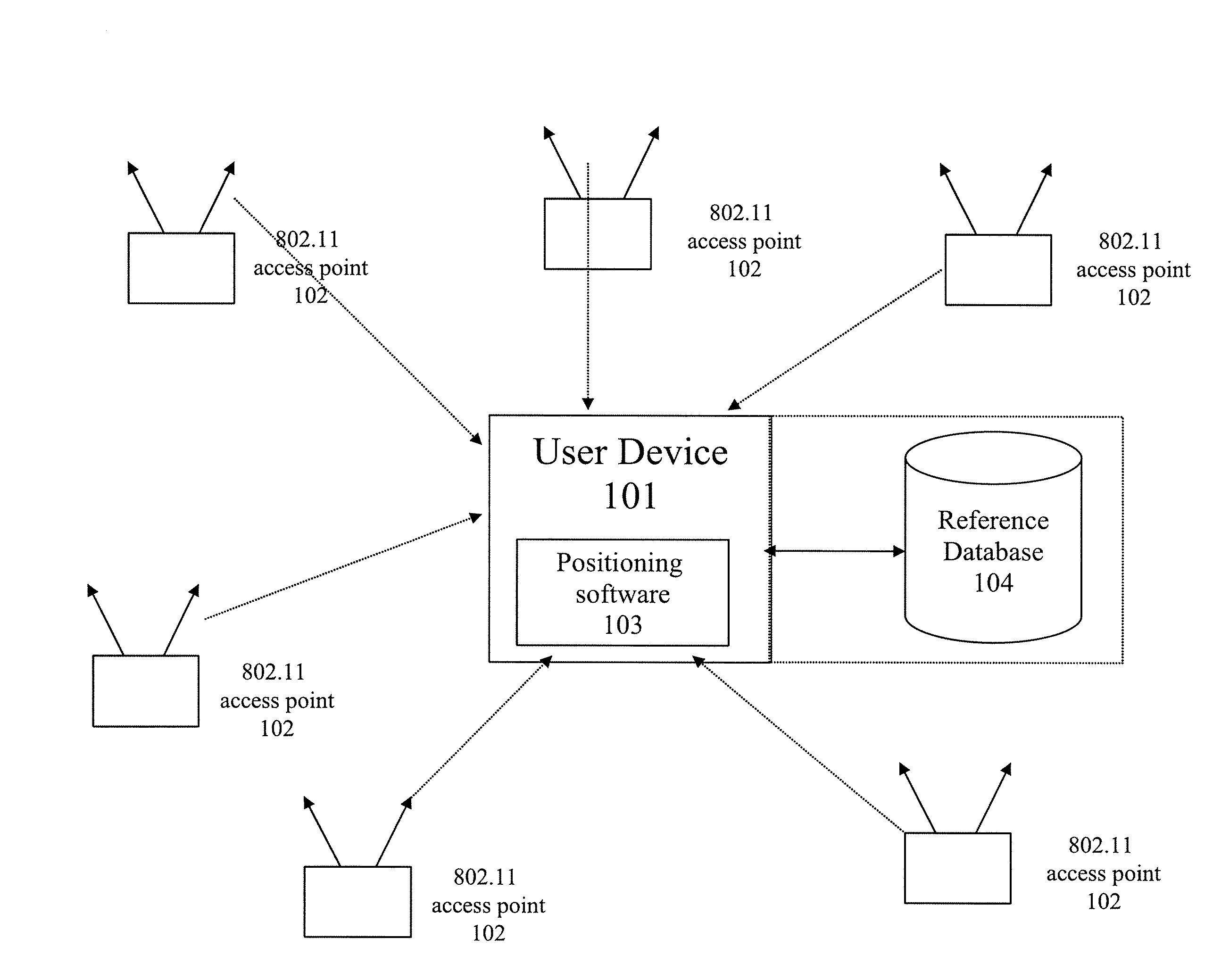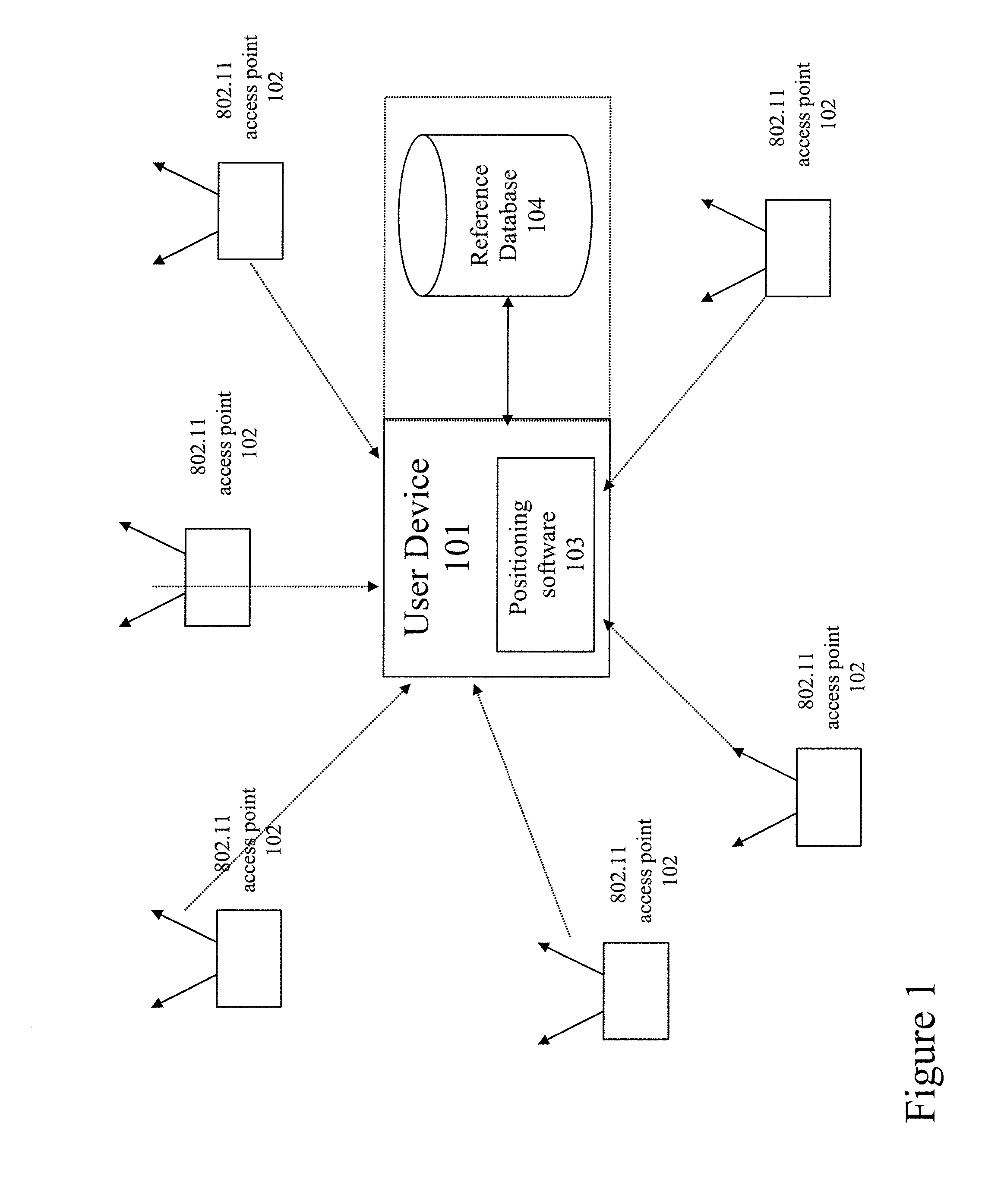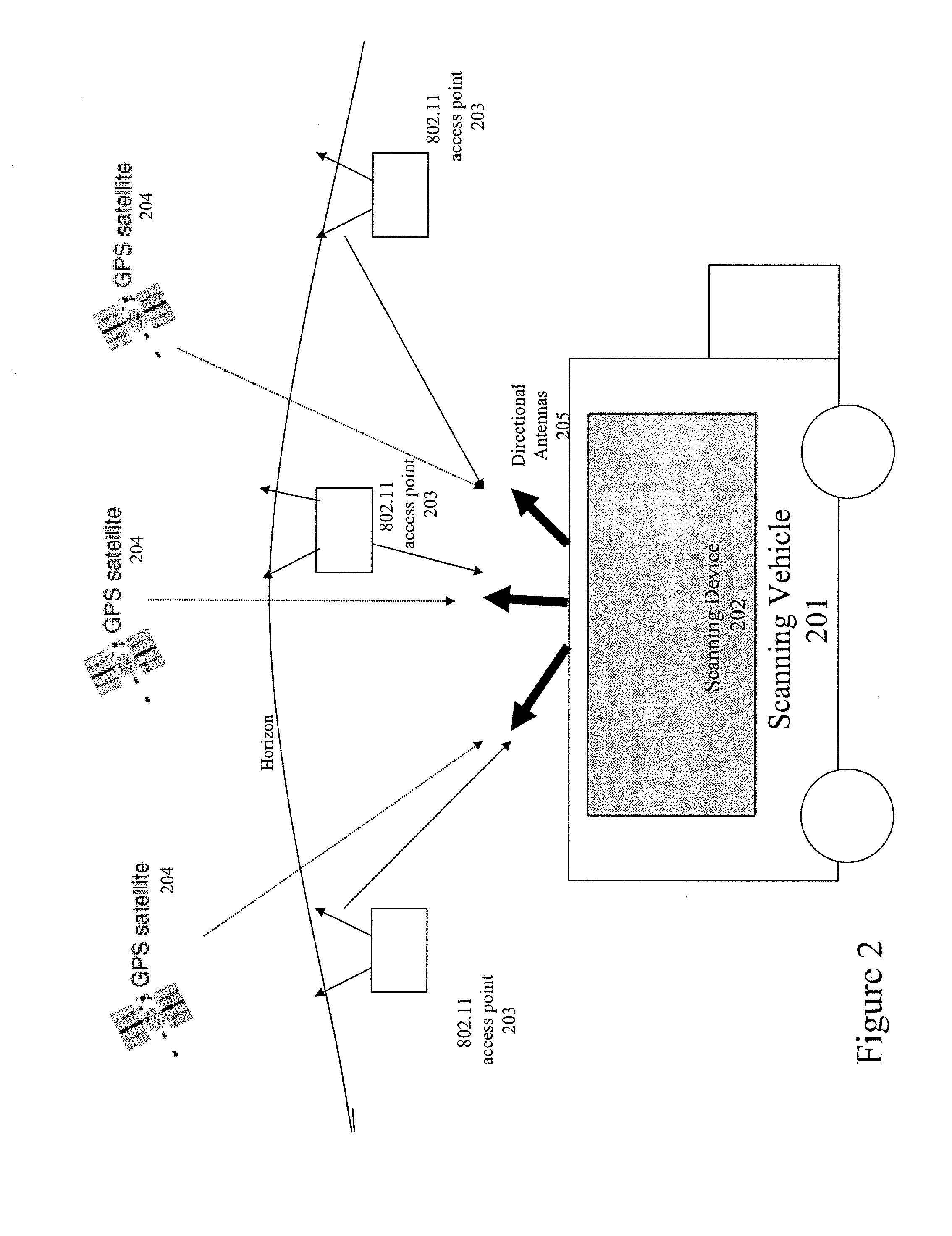Method and system for selecting and providing a relevant subset of wi-fi location information to a mobile client device so the client device may estimate its position with efficient utilization of resources
a technology of wi-fi location and mobile client device, applied in the direction of wireless communication, instruments, assessment restrictions, etc., can solve the problems of substantial errors, interference with the process, and confusion of the receiver
- Summary
- Abstract
- Description
- Claims
- Application Information
AI Technical Summary
Benefits of technology
Problems solved by technology
Method used
Image
Examples
example intended use
[0135]The following illustrates an example projected use of certain embodiments of the invention. In this example scenario, the user of a mobile device equipped with WPS software lives in a suburb of a city but works downtown. In the morning, the user asks the device (via a User Application such as navigation software) to determine the current location. This action triggers the WPS software to activate.
[0136]In this scenario, the User Application requests the location from the WPS Location Provider. The WPS Location Request Manager makes a request to the Client Device Location Estimation Module. If the LEM is unable to provide a location autonomously, the Location Request Manager passes control to the Data Communication Manager to request and retrieve location and WPS Tiles as necessary from the Central Server. The results of a Wi-Fi scan are passed to the server and the server responds with a list of recommended TileIDs that are prioritized according to the factors listed above. Th...
PUM
 Login to View More
Login to View More Abstract
Description
Claims
Application Information
 Login to View More
Login to View More - R&D
- Intellectual Property
- Life Sciences
- Materials
- Tech Scout
- Unparalleled Data Quality
- Higher Quality Content
- 60% Fewer Hallucinations
Browse by: Latest US Patents, China's latest patents, Technical Efficacy Thesaurus, Application Domain, Technology Topic, Popular Technical Reports.
© 2025 PatSnap. All rights reserved.Legal|Privacy policy|Modern Slavery Act Transparency Statement|Sitemap|About US| Contact US: help@patsnap.com



